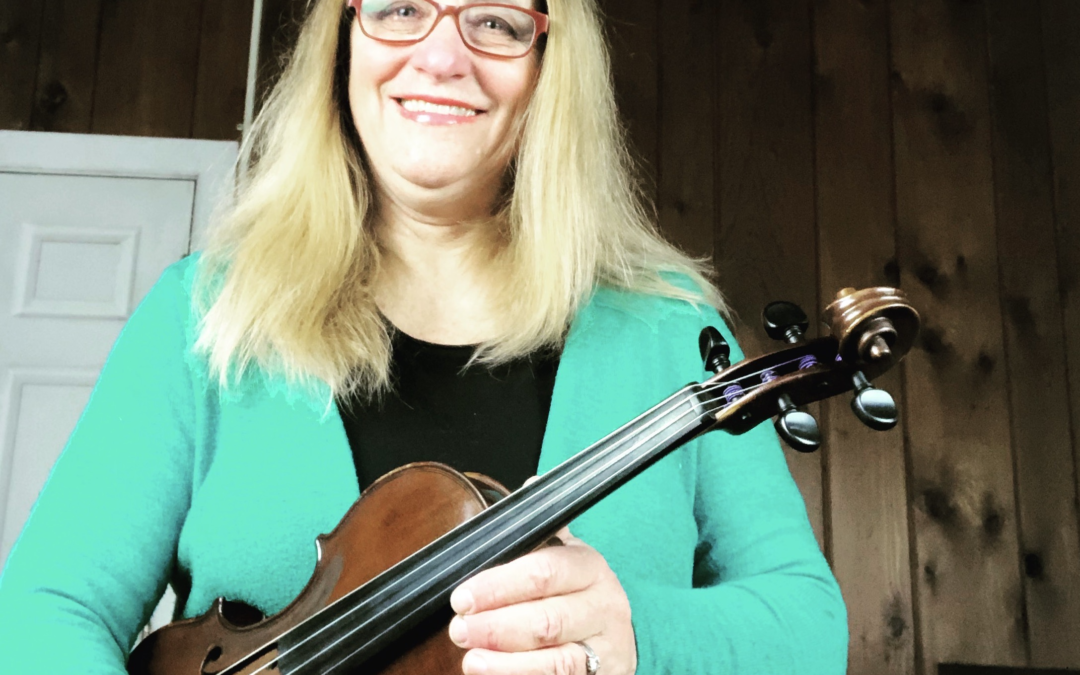Recently I decided to learn to fiddle. I wanted to play by ear and improvise. Of course, I had played fiddle tunes off printed music. But I wanted to have more insights into the history and style of this music. And I wanted to pass this music on to my students.
I attended bluegrass jam circles at farmer’s markets and music stores to learn how.
A bluegrass jam is typically a circle. Everyone in the circle takes turns choosing the next song. This usually goes in a clockwise direction. When it’s your turn, you can either pick a song or pass the privilege along to the next person if you don’t have one in mind. Erik Rolfsen
The other musicians are accommodating and pass along the etiquette of the circle. Sometimes it’s the fiddles’ turn for melody. Sometimes you play a more complicated break. Sometimes you play back-up. If someone is singing or another instrument is taking the lead, you play more quietly.
You take turns leading songs and calling out keys. You can have a kick-off to start the song and a tag to end it. If you don’t know the song, you listen for the (chord) changes and figure them out.
Most of these songs are standards. You can find sheet music, YouTube videos or backup tracks on the Strum Machine app. When you practice with the app you get a better feeling for the music. It’s almost as much fun as playing with a real bluegrass band.
I had fun practicing these songs on my porch. The music has energy with an emphasis on beats 2 and 4. I would play these songs as my neighbors were walking their dogs. When I got good at some of the songs, the dog walkers would applaud. Or strangers would walk up to me as I was unloading groceries and ask if I was the fiddler on the porch.
I wanted to pass these insights on to my students. Playing the tunes is fun. But learning the different parts of music is going to develop musicianship. Students will be able to apply this knowledge to any musical style.
So I created a Flexible Fiddling book for all the instruments. Each tune has a Building Blocks page and a String Orchestra Arrangement page. On the Building Blocks page, all students learn all the parts in unison. Violins, violas, cellos and basses all learn melody, bass line, backup, break and improvisation prompts. The orchestra practices these songs with a backup track playing in the classroom.
Then students learn the String Orchestra Arrangement. They practice that with the backup tracks until they don’t need the rhythmic support. They learn to play softer when they have a backup so that the melody can sing out. They learn to listen to the other parts so they can stay together. They develop a sense of rhythm and style
So how did the students react? They LOVE these tunes. And they are teaching them to each other. Some of my 7th graders have taught the harder songs to their 4th-grade neighbors. The younger students are asking when they are going to get to this music. And all the students are excited.
Students have taken part in the arranging process too. If an orchestra arrangement doesn’t have enough for their instrument to do, they let me know. Since I have all the material saved, I am able to rearrange it to fit the needs and abilities of my students. If a student is struggling, I make an easier part for that student. That way the whole orchestra sounds good. Each student is taking part at their own level. They’re engaged in the creative process. And they’re having fun!
I’m working on making this music available to other teachers. Let me know if you want to learn more about it. And forward this email on to a friend or colleague who might be interested.
